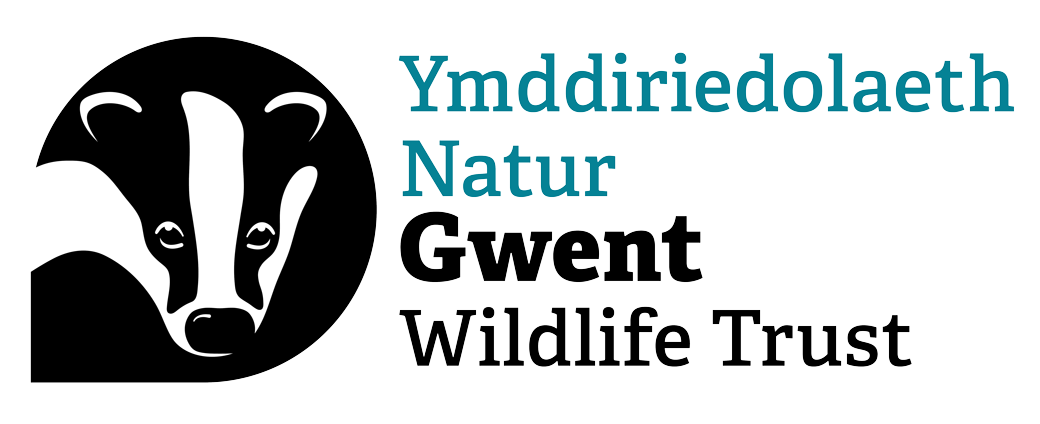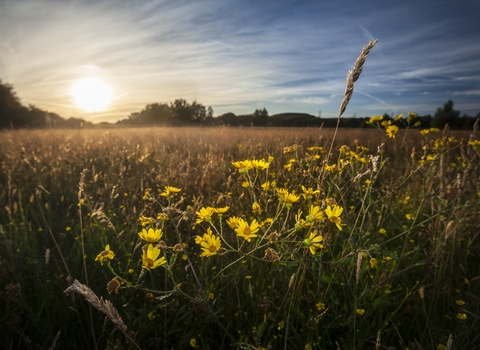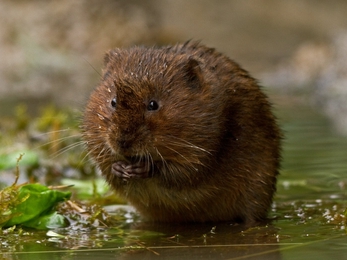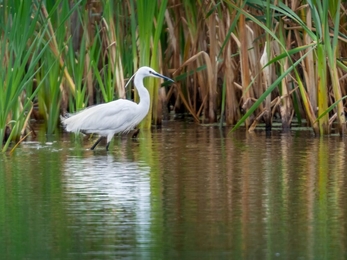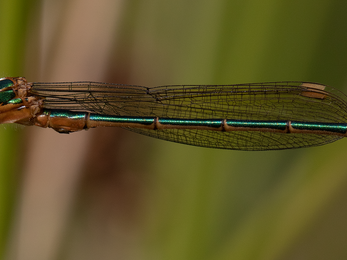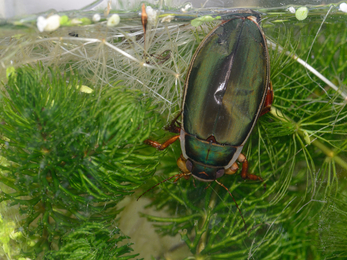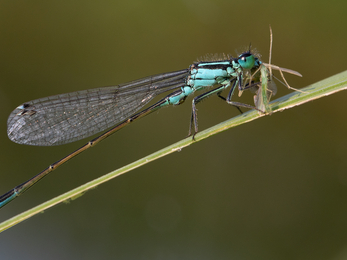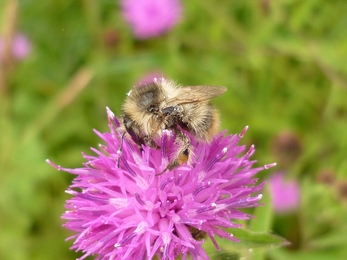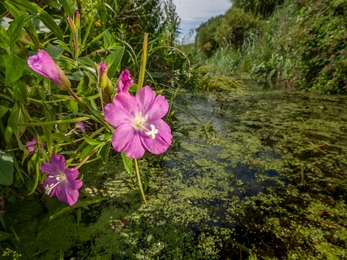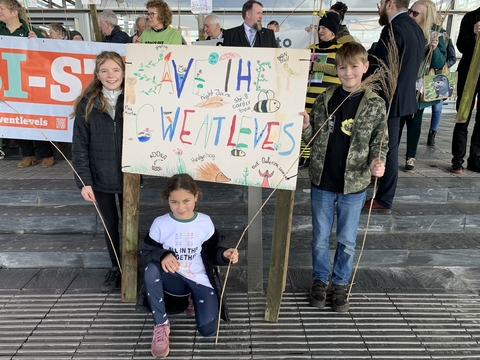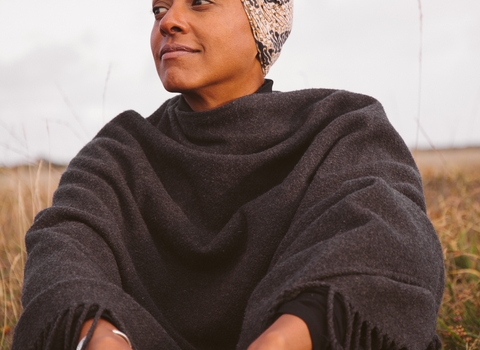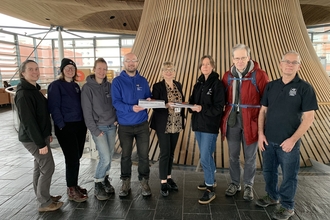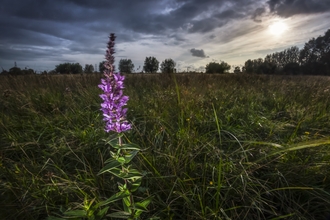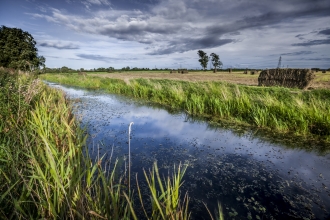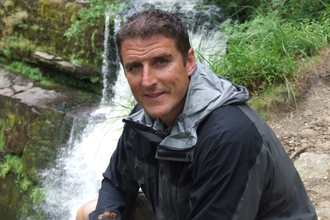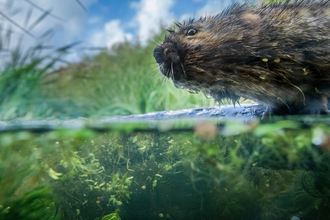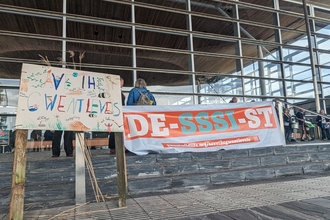The Gwent Levels is an ancient landscape with a special cultural significance and is important for biodiversity, recreation, flood alleviation, carbon storage and food production.
There are eight Sites of Special Scientific Interest (SSSIs) on the Gwent Levels, designated for their unique aquatic plants and invertebrates, which thrive in the specific water management and vegetation conditions.
Tragically, almost a fifth of these SSSIs, (Wales’ most important sites for wildlife) on the Gwent Levels, an irreplaceable wetland landscape, could be under threat if all the large-scale solar developments being planned go ahead.
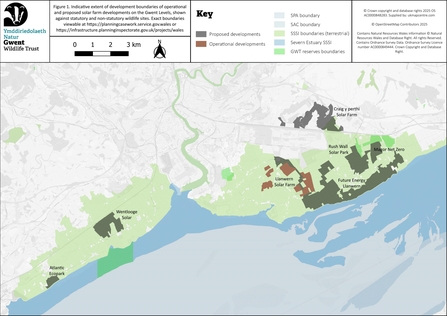
View extent of current development threat on-a-page and supporting notes.
We are campaigning for:
A moratorium on major developments on the Gwent Levels while the planning system catches up with this onslaught;
Clarification of Planning Policy Wales' new policy for protecting Sites of Special Scientific Interest SSSIs, specifically for clarification of what wholly exceptional means with respect to developing on SSSIs; (explained in this blog)
How you can help
Please help Gwent Wildlife Trust to continue to campaign and protect the Gwent Levels landscape by making a donation or by joining as a member.
For example, as well as campaigning for clarification on planning policy in Wales, we are currently fundraising to contribute to the legal costs of fighting the numerous individual damaging developments on the Gwent Levels SSSI. We have already put forward our objections at Hearings for developments at Craig y Perthi and Wentloog and another development at Rushwall is coming soon.
If you live in Wales, please write to your MS:
In November 2024, Peredur Owen Griffiths MS and John Griffiths MS launched a Statement of Opinion (the Senedd version of an Early Day Motion) calling for a halt on development on the Gwent Levels.
Read the Statement of Opinion here
Please urge your MS to sign it. Visit the WriteToThem website and enter your postcode to get a link to email your MS. Please ask them to support the Statement of Opinion on protection of the Gwent Levels, tabled by John Griffiths MS, Peredur Owen Griffiths MS and Delyth Jewell MS, OPIN-2024-0436 Protection of the Gwent Levels (e), adding why this is important to you.
We are also appealing for people from all walks of life to sign and send our Save the Gwent Levels open letter to MSs.
Take part in our open letter campaign and show Welsh Government the strength of feeling there is to protect the Gwent Levels. Please sign and share the open letter
By signing the e-action open letter you can use your voice to speak up for the Gwent Levels and tell in those in power to protect the SSSI landscape long term. It also allows you to opt in to hear about the progress of our campaign and other ways that you can support it.
Our campaign so far:
- Around 6,000 people from all corners of Wales and beyond signed our petition to ‘Halt Significant Developments on the Gwent Levels SSSI’ - Thank you. This was debated by the Senedd’s Petitions Committee in March 2024.
- On the same day our petition was debated by the Senedd's Petition Committee more than a hundred campaign supporters attended a peaceful demonstration outside the Senedd.
- In May 2024, the Petitions Committee agreed to write to the Minister for Climate Change about our concerns. It also agreed to propose a Senedd Committee inquiry into our petition request to ‘Halt All Significant Developments on the Gwent Levels SSSI’ and to review Wales’ national development framework ‘Future Wales’ in relation to this.
- One of our campaign asks was for the Welsh Government to publish their report into the impact of already-constructed developments on the Gwent Levels. This was published in 2025, evidencing a catastrophic failure of mitigation for wildlife including bats, lapwing and crane. We write to the Minister to highlight our concerns.
- Our campaign has the support of leading naturalists and authors such as Iolo Williams, Gillian Burke, Lizzie Daly, Mary Colwell and Julian Hoffman as well as our members, Levels farmers, Friends of the Gwent Levels (FOGL) and other impacted and concerned stakeholders.
A landscape under threat
The Gwent Levels are an iconic, wetland landscape of International significance. Reclaimed from the sea in Roman times, the Gwent Levels are a criss-crossed network of fertile fields and historic watercourses, known locally as reens.
The Gwent Levels is home to an incredible diversity of wildlife. Gradual changes to the landscape followed by centuries of human's maintenance of the watercourses means that the Gwent Levels is now home to a rich abundance of fascinating and rare aquatic invertebrates (watery bugs) in the country.
The levels also support a wide variety of birds, particularly waders and waterfowl. A number of European protected species and UK protected species have been confirmed to be present, including dormice, grass snake, some bat species, otter, great crested newt and water vole. The charismatic water voles had become locally extinct from the Levels but are now increasing thanks to our reintroduction programme.
Questions and Answers
Why can't we just leave the planning system to decide which development would be appropriate on the Gwent Levels?
- Currently, the Welsh planning system is not able to control development proposals on the Gwent Levels.
- Planning conditions do not grant protection of the Gwent Levels’ wildlife and landscape.
- Objectors need to prove that the development proposals would be damaging. Yet, this is almost impossible to prove. This is because post-development monitoring results are either:
- not available,
- not fit for purpose,
- or not accepted by the Welsh Planning Inspectorate (PEDW).
- Only a Welsh Government halt on development on the Gwent Levels will save them for future generations.
Some of the development proposals are for solar energy - don't we need to fight climate change by building solar farms?
- We are very much in favour of renewable energy development, but it must be in the right place.
- The Gwent Levels is a 'Site of Special Scientific Interest' (SSSI). This is due to the rare species of fauna or flora it contains. The Gwent Levels have high conservation value and need to be protected.
- SSSIs only cover 12% of the land and coastal area of Wales. They play a significant role in combating against the conjoined Nature and Climate Emergencies.
There is more suitable land throughout Wales (including in Gwent) for solar energy development. ‘Priority Areas for Solar’ are set out in the 2019 version of Future Wales: The National Development Framework.
Why can't the wildlife of the Gwent Levels coexist with major development?
- Mitigation or compensation for damage caused by developments are not adequate. CCW have concluded that the unfavourable status of the Gwent Levels SSSI is due to development.
- The only modern post-construction monitoring study contains many methodological flaws. It is therefore difficult to draw firm conclusions from it. However, it does show severe adverse impacts, such as:
- the complete destruction of the breeding colony of lapwings on the site. (Lapwings are a scarce and declining, red-listed bird in Wales).
- a very significant reduction in numbers of other scarce birds and bats in the vicinity of the development.
- Gains in wildlife from solar farms are based on sites which had little or no wildlife value. This is not the case for the fragile and complex wetland ecosystems of the Gwent Levels.
What is an SSSI?
A Site of Special Scientific Interest (SSSI) is an area of land that’s really important to our national, natural heritage because of the rare and important plants and animals that are found on them. These sites are considered to best represent their natural features. They are only a representative sample of the important habitat type found there - so for every SSSI there are more sites with no protection - and so SSSI designated sites must be protected at a high level. This means, for example, that owners must properly manage the site to conserve the wildlife there.
